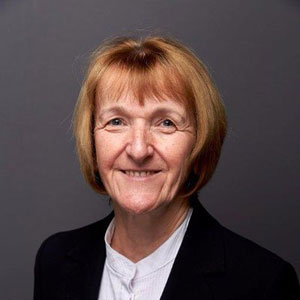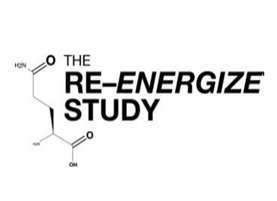The man lying in the emergency department has had a bad morning. After tumbling down a set of steps, suffering a nasty head injury, he has been rushed to the QEHB by the Midlands Air Ambulance and has already undergone a CT scan.
Dr Nick Crombie, in his red air ambulance coveralls, briefs the emergency department team, which is led by Dr Barry Boland, as nurses and more junior doctors busy themselves checking vital signs and dressings and ensuring the patient is as comfortable and safe as possible.


But amidst the bustle is a nurse for whom this patient represents even more than a life in danger.
Sister Aisling Clarkson is a senior research nurse for trauma, and patients like this offer the chance to better understand how the body responds to injury. As Dr Crombie reels off the litany of injuries, known and suspected, as well as the treatments provided, Sr Clarkson is flipping through a set of plastic flash cards.
Each card holds the criteria for one of several relevant studies underway at the hospital. The studies might be looking for patients with head injuries, or with broken limbs or even burns. The result this time?
“He’s a possible, definitely, the poor guy. His injuries match what we’re looking for with the SyNAPSw study,” she explains, with a grim smile.
In other words, the injuries and known history fit the criteria for someone who could take part in the SyNAPSe clinical study, which looks at whether a drug called progesterone can help patients with severe traumatic brain injury.
That grim smile reflects the fact that, for the hospital’s trauma research nurses, success in recruiting a patient means that patient has suffered life-threatening injuries.
“We do see a lot of very sick people and it can be quite heartbreaking, but we know that the research we’re doing will help a lot of people in the long run,” she says.
“We see patients who have lost their families in accidents, or who will be living with their injuries forever, so we always have to be sensitive.”
Sr Clarkson’s initial screening of this patient today triggers a series of phone calls to the critical care consultant and neurosurgeon who have overall responsibility for the SyNAPSe study. They will make a formal clinical decision on whether the patient fits the criteria.
Then comes recruitment, one of the most difficult challenges for Sr Clarkson and her team. Warrant Officer Ann Carter is a military trauma research nurse and says approaching patients or their families to take part in a study is an important but delicate task.
Recruiting patients
“You have to be sensitive, because they’re already going through so much. Some of them think it’s great to take part, because they want to help people, but others are just not ready to think about it yet,” she says.
“You play it by ear and you have to respect their wishes.”
Once a patient has agreed to take part, or someone has agreed on their behalf, a whole new set of events will unfold.
In the SyNAPSe study, the patient will be randomised, explains Sr Clarkson: “This study is a multi-national study and we’ve been provided with a set of pre-labelled drugs. When we recruit a patient we enrol them in an on-line process, which allocates the patient with a unique identifier.
“This identifier corresponds to a batch of the drugs we have been given. Some of those batches will be progesterone and some will be placebo.
“We don’t know whether the patient is getting the drug or a placebo, but the system can track it and compare patients’ progress to see if there is a difference in response.”
Monitoring the patients
Most of these patients will spend weeks in critical care or on a ward, during which time the nurses will carry out regular tests and observations.
Sr Clarkson runs through the list of today’s tests. Each is identified by a different coloured top on the sample tube, and varies from patient to patient depending on the study involved.
These blood and urine samples are taken at set intervals, all carefully documented and eventually sent to the QEHB research lab run by Hema Chahal.
There they will be screened for a range of different properties, depending on the study. Today Sr Clarkson delivers a set of blood samples from patients in the SIRS study, which is looking at the body’s inflammatory response to trauma.

Every major trauma patient who arrives at QEHB is a potential candidate, but the research nurses are often looking for only the most seriously injured.
Among those are some of the military patients who have been repatriated from Afghanistan, often with very serious injuries such as amputated limbs.
“These patients are very, very sick when they arrive here, so again we have to be sensitive with approaching the families,” says WO Carter.
“But quite often you find their families want them to take part in research because they see that it could help other soldiers who are wounded in the future.”
Sr Clarkson and WO Carter are part of a four-nurse team with Sr Gemma Qiu and Sr Laura Moore, all highly experienced nurses playing a key role in some of the Trust’s most important research.
They work as part of the NIHR Surgical Reconstruction and Microbiology Research Centre (SRMRC), a ground-breaking collaboration between the Trust, Ministry of Defence and University of Birmingham to improve trauma care in the NHS.
While today’s seriously injured patient is getting outstanding care at QEHB, the dedication and professionalism of the hospital’s trauma research nurses is helping to make that care event better in the future.
- Click here to read about the clinical trials underway at SRMRC
- Click here to read about the SRMRC’s nursing team
This article was originally published in the news@QEHB magazine.



